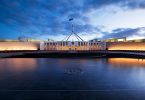photo by Eva Rinaldi
Indian immigration to Australia has been tracking up for some time. In fact, according to data from the United Nations Population Division, Indian immigration to Australia has increased by more than two hundred per cent between 2004 and 2008.
The Australian Bureau of Statistics released data that showed Indians were the third-largest immigrant population to come to Australia in 2019, after England and China.
The same dataset showed that according to the UN, the top five countries to immigrate to Australia between 1980 and 2008 in total were; the UK (which included Great Britain, Ireland, Wales and Scotland), New Zealand, the USA, China (Hong Kong) and China.
However, when comparing both immigration and emigration (people migrating overseas from Australia) from the same dataset, India only just made the top 10 list of countries between 1980 and 2008.
It’s easy to assume that the reason most immigrants hail from either the UK, NZ or USA would be the absence of a language barrier, but what’s more interesting are the reasons for the spike in Indian immigrants since the early 2000s.
Indian immigration to Australia had occurred long before federation in 1901. However, Australia then adopted the ‘white Australia policy’ which prevented Indian (and other non-white) immigrants from coming to Australia with the exception of Anglo-Indians and those holding British dual citizenship until 1973 when the policy was abolished.
Under British rule, some British soldiers were encouraged to have babies with local Indian women so that they could assimilate the two cultures. Thus, creating the ‘Anglo-Indian’ generation, who were viewed by much of the colonial authorities as superior.
However, once the country became independent, the Anglo-Indians were then shunned and ostracised by the native Indians, so many fled persecutions to places such as Australia. Other Indians would later join them after 1973 when India gained independence.
While Australia’s immigration policies were initially built on controlling population growth, since the 1990s, governments have been focused on addressing concerns facing labour market shortages.
Under Prime Minister; John Howard, the LNP took a tough approach to immigration and border control. The LNP reimplemented the ‘Pacific solution’ – originally created under a Labor – to stop the irregular boat arrivals carrying refugees and asylum seekers.
The LNP’s main immigration policy know as ‘One Australia’ outlined Howard’s preferences to bias skilled migration applications over family reunions and other circumstances.
This is why most Indians coming into the country during this period and beyond were skilled migrants.
India has been seen to have both educational and technological advantages which is why Australian immigration sees them as a welcome solution to the labour market shortages.
On a more sinister note, businesses have been known to pay migrant workers less than locals, so employers would also favour the increase in skilled migration.
While the United Nations data has not been updated since 2015, if the ABS and Australian government predictions are anything to go by, Indian immigrants are on track to be the largest immigrant population in the country.







